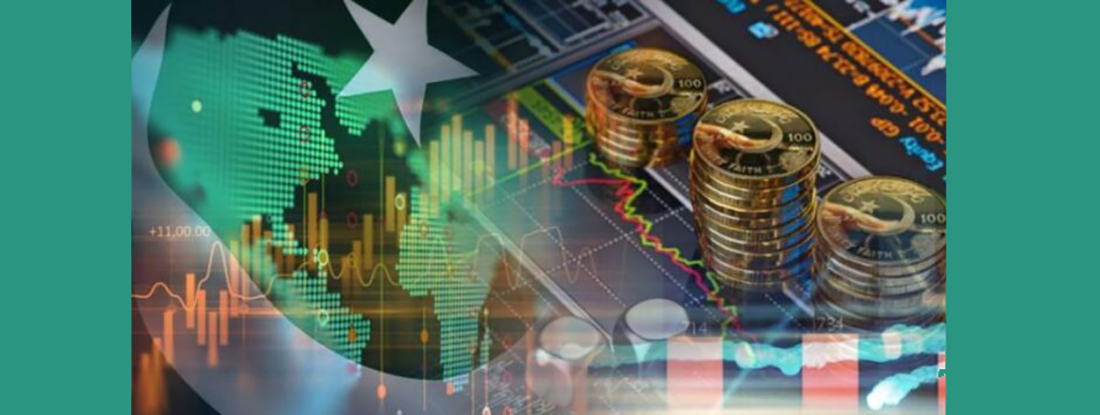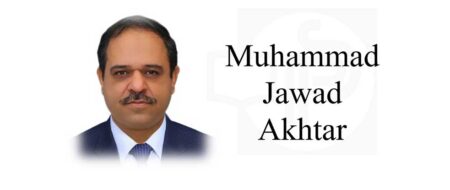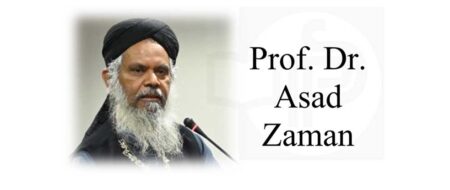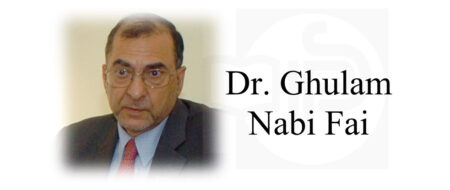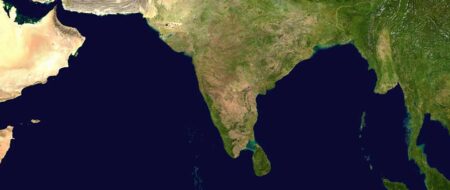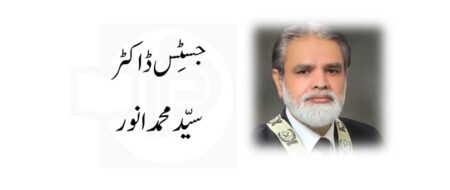Flip side of economic growth: Pro-poor or anti-poor?
It is high time for intellectuals and development thinkers to reflect on the imperatives of economic growth. If the government is really interested in winning the hearts of the poor, then pro-poor policies should be framed by exiting from the IMF as early as possible. The GoP needs to realize that the dream of a welfare state can only be materialized if they make the growth inclusive and sustainable and if the tax base is boldly expanded rather than tightening the rope on already suppressed tax payers.
Flip Side of Economic Growth: Pro-Poor or Anti-Poor?
Dr. Abdul Saboor, Professor of Economics, Dean, Faculty of Social Sciences
PMAS Arid Agriculture University, Rawalpindi and
Non-Resident Research Fellow, Institute of Policy Studies (IPS), Islamabad.
drabdul.saboor@uaar.edu.pk
It is high time for intellectuals and development thinkers to reflect on the imperatives of economic growth. Instead of wasting time to identify who is wrong and who is right in the configuration of growth, one needs to ponder over quite deeply what is right and what is wrong for the poor masses of Pakistan. Those who are celebrating 3.94 percent growth may very likely be poor in wisdom if they ignore its trickledown effect while those who are violently criticizing merely on political grounds are actually ignorant of the flip side of economic growth. The proponents must realize the fact that under IMF umbrella, poverty is the only outcome of macroeconomic policies. History has already proved it. The opponents should be careful in totally rejecting the count of GDP growth rate. Rather, they may argue for three years’ average economic growth rate which comes out to be around 1.8 percent. In the same fashion, the real truth lies in further reflection without any political leanings.
Pakistan’s is not a frictionless economy where most of the markets are hardly competitive in terms of typical behaviors of key economic players. Market distortions are commonly placed in agriculture and services sectors in addition to underground streams of economic activities backed by some typical cartels and mafias. Moreover, one should not lose sight of the forest while keeping this core narrative in view that economy of Pakistan is not fully documented particularly when we talk about these two sectors. Above all, whatsoever is documented in national exchequer is neither getting intellectual support of independent economists nor gaining full confidence of the general masses. Where the fault lies?
In, Pakistan, we have a very poor data base partly because of weak institutional structure and partly due to incompetent and untrained human resource involved in the affairs of data gathering and its compiling. To add to the injury, there is very limited technical team of experts who could refine facts and figures on purely scientific and statistical basis. But, people at the helm of affairs in Statistical Bureaus and Planning Commissions are otherwise competent enough to fudge the figures in the favor of big bosses. Minute twists and turns may be given to the data at the sweet will of a cute Minister whose only aim is to get short term political score. The relatives of some renowned law makers have magic bullets to show stock markets booming high in the sky.
In this context, the ground realities are more important for assessing the reliability of 3.94 percent economic growth in a situation when official inflation estimates are around 11 percent and cotton production has dropped by 22.8 percent (7.1 million bales). Nobody knows how much exaggeration has been made in the upward count of wheat production. Just one billion over-estimates may bring in a significant jump in GDP. Before getting fair answer of whether 4 percent is a plausible estimate or not, one should look at the way the estimates have been configured through complicated methods and measures for years. Secondly, even if this official figure is accepted keeping in view the last year’s base at the lowest ebb, the key economic puzzle still lingers how much proportion of that economic growth would reach to the poor at how much time and that too on sustainable basis.
Historically, economic growth has been mostly anti-poor across the years and decades. Thanks to IMF and structural adjustment programs. Anti-poorness of growth is also associated to the structure of the economy and the way the public policies are formulated which are mostly for the protection of vested interests of the elite class. Estimation of the fact whether present economic growth is truly pro-poor or anti-poor is substantially a difficult task; particularly through quantitative means. Fudged estimates cannot be responded in a fudged fashion. So far, the observations taken through qualitative measures pose sorry state of affairs. What is the fun of celebrating high economic growth when the rich are going to be richer and expanding their basket of luxury goods while the poor are going to be poorer for the lack of very basic necessities of life? Besides unemployment and high inflation, the real wages are all time lowest in Pakistan.
GDP growth rate is generally accelerated through the good services of deprived farmers and poor labors otherwise being violently exploited by the rich class in general and public policies in particular. The major chunk of economic profit goes to the pockets of the rich. This typical behavior of the rich for the poor and that too backed by government policies delivers economic downturn as poor has left nothing to spend for the manufactured items. The poor who are working hard at low wages are to face high prices at product markets thereby accelerating the extent of poverty. Poor health and food insecurity are the traditional gifts of poverty which ultimately cause low productivity and inefficiency in labor markets. Blind offer of subsidies intensifies the already deteriorated situation. Rich are generously incentivized at the cost of inflation and taxes to be paid by the poor. And who cares about the criminal elements that may emerge out of chronic poverty?
Turning the fruit of growth towards poor is in the very much interest of the rich and for the government for ensuring a growing consumption pattern and sustainable growth. Moreover, one time economic growth should not be taken as good news for it takes ample time to reach the fruit of that growth to the poor. Unfortunately, we did not take lessons from our own history and odd development experiences. It was late in 1968 when Dr. Mahbub-ul-Haq had admitted, “we have been told to take care of GDP, it will take care of poverty, but with time we have realized that if we take care of the poor, it would automatically take care of GDP”. So, for getting a pro-poor growth of even 3 percent is far better that anti-poor growth of 4 percent. Prevalence of income inequality leads to growth reduction in subsequent years. The dilemma leads to violent conflicts.
There is another significant aspect in the estimates of GDP, which the rational thinkers need to peep through the real potential of the economy deeply. There is likelihood of good unanimity among the development economists and policy makers on the fact that Pakistan’s economy, particularly the agrarian one, is carrying huge potential of growing if public policies are favorable. Agriculture sector which is contributing 19.2 percent in the GDP should be given at least as much importance as parallel to other sectors of the economy. Export led growth is remarkably more effective and pro-poor rather than import of luxury items which are just benefitting few importers causing inequality. Heavy chunk of unplanned imports implicitly determines that local industry is being discouraged and real potential of the economy is untapped.
Economic growth might help in reducing poverty but it is not sufficient enough to serve the real purpose. To make growth purposeful and pro-poor, the real output at primary level matters a lot and that too through the employment of deprived and poor segments of the society. Economic growth emerging from the real sector is much more important than growing of only one sub-sector run by traditionally called 22 families. The import of luxury items should be totally banned in Pakistan for couple of years rather than enhancing the energy prices. There is no denying the fact that economy of Pakistan has the potential to grow in many sectors including agriculture, industry and services. The winning pro-poor reform may be to create employment opportunities and to revisit wage rates on rational grounds.
For how long we will be making fool of the poor through slogans and through firefighting across political lines. One should not forget the lesson of history that when political mess is created in an economy, there is widening GDP gap (difference between potential GDP and actual GDP) which may dilute the morale of business and commerce in the whole economic system. Governments are always liable to answer the question of what maximum could not be done rather than what minimum has been achieved. Reaping the full potential of the economy and that too by engaging the poor should be the priority agenda of both the proponents and opponents of 4 percent economic growth.
If government is really interested in winning the hearts of the poor, then pro-poor policies should be framed by exiting from the IMF as early as possible. While the opponents should come up with wisdom agenda in the social, economic and policy fronts by strongly advocating the fact that amidst corruption, poor economic management and bad governance, high statistics of growth of artificial nature is not good news to be proud of. On the other hand, the proponents of the government should realize that the dream of a welfare state can only be materialized if they make the growth inclusive and sustainable and if tax base is boldly expanded rather than tightening the rope on already suppressed tax payers.


